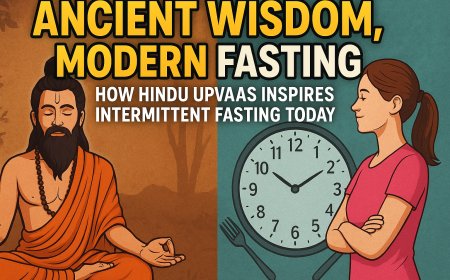The Science of Fasting: What Happens in Your Body Hour by Hour
Wondering what actually happens inside your body while fasting? This science-backed guide breaks down the exact fat-burning changes that take place hour by hour during intermittent fasting.

Introduction:
You’ve started fasting. You’re skipping meals. You’re drinking your black coffee.
But ever wonder — what’s really going on inside your body?
Understanding the science of fasting helps you trust the process, stay consistent, and unlock better results.
In this blog from LeanFasting.com, we break down what happens hour-by-hour in your body during intermittent fasting — so you stay motivated and informed
0–4 Hours: Digesting Mode
-
After eating, your body is in “fed state”
-
Insulin is high, storing nutrients and blocking fat burning
-
Energy comes from carbs/glucose
Fat loss = at this stage
That’s why frequent snacking stalls results
4–12 Hours: Transition Begins
-
Blood sugar drops, insulin starts decreasing
-
Body begins using glycogen stores (stored carbs in liver)
-
Cravings might kick in as energy shifts
Tip: Stay hydrated, distract yourself with light activity
12–16 Hours: Fat Burning Mode Activated
-
Insulin is low
-
Body starts burning fat for energy
-
Ketones (fat-derived fuel) are produced – boosts brain clarity and energy
-
Autophagy begins — your body cleans out damaged cells
This is the sweet spot for fat loss + mental clarity
16–24 Hours: Deep Cellular Repair
-
Fat burning increases
-
Autophagy ramps up — fights aging, inflammation, and improves immune response
-
Growth hormone spikes (up to 5x), supporting muscle repair
This is when your body turns into a fat-burning + healing machine
24–36 Hours: Insulin Resistance Drops
-
Studies show this stage dramatically improves insulin sensitivity
-
Better blood sugar control = better long-term fat loss
Note: Extended fasting (beyond 24h) should be done under guidance or occasionally only
36–48 Hours: Hunger Hormones Reset
-
Ghrelin (the “hunger hormone”) stabilizes
-
Many people report less hunger, not more
-
Body enters a calm, fat-adapted state
Your metabolism is not "slowing down" — it’s becoming more efficient
Lean Insight:
“Your body doesn’t go into starvation during fasting — it goes into optimization. Trust the process, science is on your side.” — LeanFasting.com
Summary Table:
|
Time Range |
What Happens |
|
0–4 hrs |
Digesting, no fat loss |
|
4–12 hrs |
Glycogen use, insulin drops |
|
12–16 hrs |
Fat burning begins, autophagy starts |
|
16–24 hrs |
Deep repair, growth hormone spikes |
|
24–36 hrs |
Insulin sensitivity improves |
|
36–48 hrs |
Hormone reset, appetite normalizes |
FAQs:
Q. Is 16 hours enough for fat loss?
A. Yes! 16:8 fasting consistently activates fat burning and healing without pushing your body too hard.
Q. Should I fast longer than 24 hours?
A. Occasionally, yes — under guidance. But for most people, 16:8 or 18:6 is sustainable and powerful.
Q. Will my body go into “starvation mode”?
A. Not unless you’re fasting for days without proper nutrition during eating windows. Smart fasting = safe fasting.





























